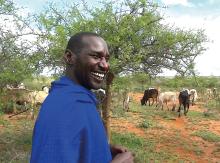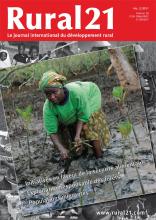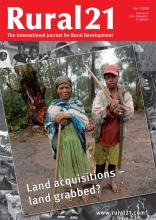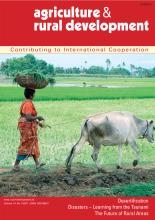Land Library
Welcome to the Land Portal Library. Explore our vast collection of open-access resources (over 74,000) including reports, journal articles, research papers, peer-reviewed publications, legal documents, videos and much more.
/ library resources
Showing items 1 through 9 of 12.The year 2016 marks 15 years since the new wave land reforms became operational in Tanzania. Despite its ambitious goals – encouraging land registration and titling, and empowering women and other vulnerable groups – the results are disillusioning.
With more than 900 million people world-wide affected by chronic hunger, international action on soil conservation is urgently required.
Au Burkina Faso, le potentiel en terres arables à vocation agricole est épuisé. À l’avenir, la population en rapide expansion ne pourra être nourrie que s’il est possible d’accroître les rendements sur les terres cultivées existantes.
In many Asian, African, and South American nations, indigenous people are being driven from their homes: Government authorities are leasing hundreds of thousands of hectares of land belonging to indigenous people who only in the rarest of cases possess deeds to the land that are recognised by the
If legal instruments are not fully implemented, there is a risk they remain in the domain of virtual reality and wishful thinking.The UN Convention to Combat Desertification (UNCCD) has come a long way since it came into force in 1996, with current membership standing at 191 Parties.
The Millennium Ecosystem Assessment projects that the intensification of freshwater scarcity in combination with continuous water extraction from delicate dryland ecosystems is likely to exacerbate desertification, thus leading to a downward spiral of ecological deterioration and a precarious dep
Desertification is nowhere more serious than in the Middle East and North Africa (MENA), stretching from Pakistan in the east to Morocco in the west, and from Ethiopia and Sudan in the south to Turkey in the north. Yet, many MENA countries have successfully rehabilitated large areas.
Hardest hit by desertification is Sub-Saharan Africa, where poverty is more widespread, preparedness for catastrophe is lower, and means for adequately coping with the phenomenon are very weak; two thirds of the arable land will be lost by 2025.The subcontinent needs improved integrated initiativ
Despite ambitious desertification control programmes, the area of desertified land has expanded continuously since the establishment of the People's Republic of China, with increasingly serious impacts on important industrial and settlement areas.





